When most people think of Verona, their minds flutter to the tragic love story of Romeo and Juliet. But this city, nestled in the heart of Italy’s Veneto region, has layers of charm, history, and hidden gems that extend far beyond its Shakespearean fame.
Curiosity and a love for Italian culture led me to delve deeper into what makes Verona truly special. Speaking with locals, exploring streets less traveled, and indulging in the city’s culinary delights, I gathered a list of experiences that paint a vivid picture of Verona’s diverse offerings. It’s not just about Juliet’s balcony.
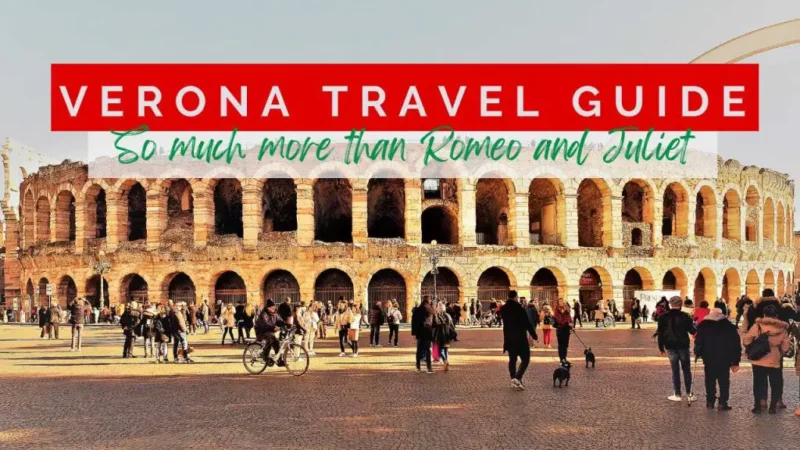
Verona is a mosaic of Roman history, Renaissance beauty, and gastronomic delight, inviting visitors to step into a world where every stone and alleyway has a tale to whisper. Moving beyond the Juliet balcony, you’re enveloped by the city’s vibrant piazzas, magnificent churches, and ancient bridges that tell tales of centuries past.
But there’s also a modern side to Verona, with contemporary art installations, chic boutiques, and a lively opera scene that promises enchantment for every kind of traveler. Whether you’re a history buff, a foodie, or someone looking for the perfect blend of past and present, Verona awaits with arms wide open, ready to reveal its secrets to those willing to look a little closer.
Join me as we explore together the multifaceted wonders of Fair Verona – a city that indeed, is so much more than Romeo and Juliet.
A Brief History Of Verona
Verona, a city in northern Italy with a history that spans over two millennia, is a testament to the blend of cultures and epochs that have left their mark on this enchanting place. Founded in the 1st century B.C., Verona flourished under Roman rule, as evidenced by the still-standing and remarkably well-preserved Arena, an amphitheater that hosted gladiatorial fights and is now a premier venue for opera.
After the collapse of the Roman Empire, Verona saw a multitude of rulers: from the Ostrogoths and Lombards to the powerful Scaliger family in the Middle Ages, who fortified the city and commissioned many of its splendid Romanesque and Gothic structures. The city’s strategic importance continued under Venetian rule from 1405, fostering a golden age of art and architecture until it fell to the Habsburgs in the late 18th century.

Throughout the 19th century, Verona was a focal point in the struggle for Italian independence and unification, eventually joining the Kingdom of Italy in 1866. In the 20th century, Verona endured the tumults of two World Wars, emerging as a vibrant cultural and tourist center.
Verona’s rich history is not just confined to its famous Juliet balcony, linked to Shakespeare’s tale of Romeo and Juliet, but is also embedded in its Roman ruins, medieval castles, and Renaissance palaces, making the city a UNESCO World Heritage site and a timeless witness to Italy’s diverse historical narrative.
Top 9 Incredible Things To Do In Verona
1. Visit the Arena di Verona
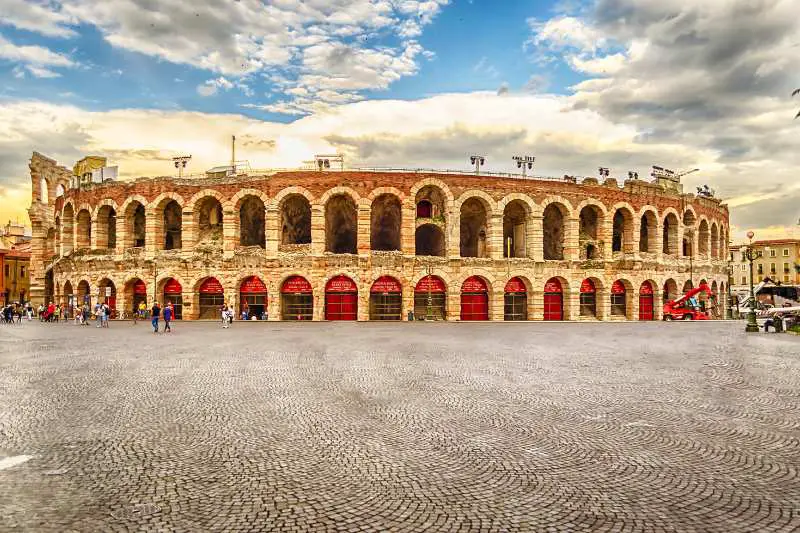
The Arena di Verona is not just an ancient Roman amphitheatre; it’s a living testament to the ingenuity and cultural sophistication of ancient civilizations. Its state of preservation is extraordinary, allowing it to host large-scale operas and performances that attract audiences worldwide.
The experience of watching an opera in this ancient venue, under the stars, is unparalleled – it’s like stepping back in time while enjoying modern-day performances.
The Arena’s architecture, with its vast stone tiers, provides a natural acoustic enhancement, ensuring that each note of the performance reaches every corner of the amphitheater. This blend of ancient history and contemporary entertainment makes the Arena di Verona a must-visit attraction, offering an unforgettable experience that connects visitors with centuries of human tradition.
2. Explore Juliet’s House (Casa di Giulietta)
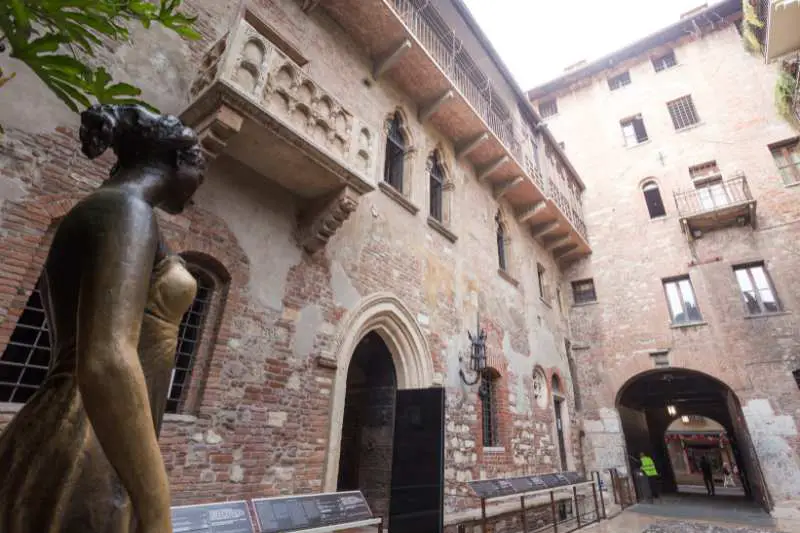
Juliet’s House (Casa di Giulietta) earns its place on this list as the embodiment of the timeless allure of Shakespeare’s “Romeo and Juliet.” While the story of the star-crossed lovers is a work of fiction, the enchanting balcony and the house said to have belonged to Juliet offers a tangible connection to the world of the play.
Visitors flock here to leave love letters or just to stand beneath the iconic balcony, imagining the tragic romance that has captivated hearts for generations. The house serves not only as a monument to love and tragedy but also as a symbol of Verona’s deep-rooted associations with romanticism and literature.
You also won’t want to miss the statue of Juliet in the courtyard near the balcony. Here you can rub Juliet’s breast. It’s said that if you do, you’ll be lucky in love!
3. Stroll through Piazza delle Erbe
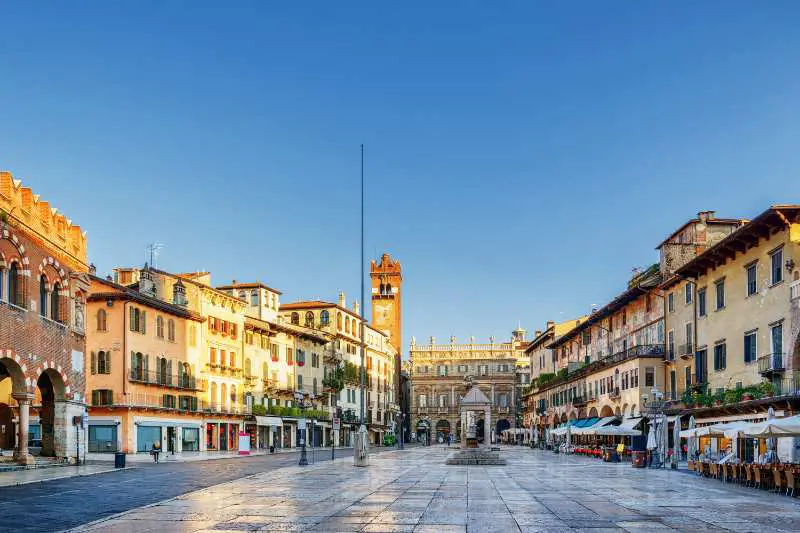
Piazza delle Erbe is more than just the central square of Verona; it is the pulsating heart of the city, a marketplace that has served as the hub of Veronese social and economic life since Roman times. Surrounded by magnificent medieval buildings and dominated by the Torre dei Lamberti, the square is a living museum, showcasing layers of architectural and cultural evolution.
The daily market offers a glimpse into local life, with stalls laden with fresh produce, traditional delicacies, and Veneto region specialties. This vibrant mix of history, architecture, and daily Italian life provides an authentic experience of Verona.
4. Visit the Verona Cathedral (Duomo di Verona)
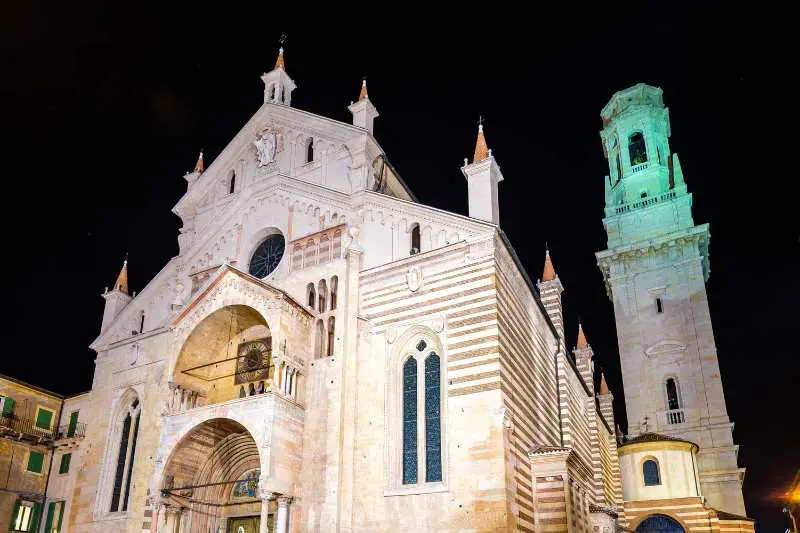
While Italy is renowned for its religious sites, the Verona Cathedral stands out for its impressive architectural ensemble, blending Romanesque, Gothic, and Renaissance elements. Each art piece, from the façade’s sculptures to Titian’s altarpiece inside, tells a story, offering a silent narrative of the city’s religious and cultural evolution.
The cathedral is not just a place of worship; it’s a repository of art and history that has witnessed centuries of devotion, making it a compelling visit for those interested in the convergence of faith, art, and history. Its tranquility also offers a respite from the hustle and bustle of the city, inviting reflection amidst awe-inspiring surroundings.
5. Walk along Ponte Pietra
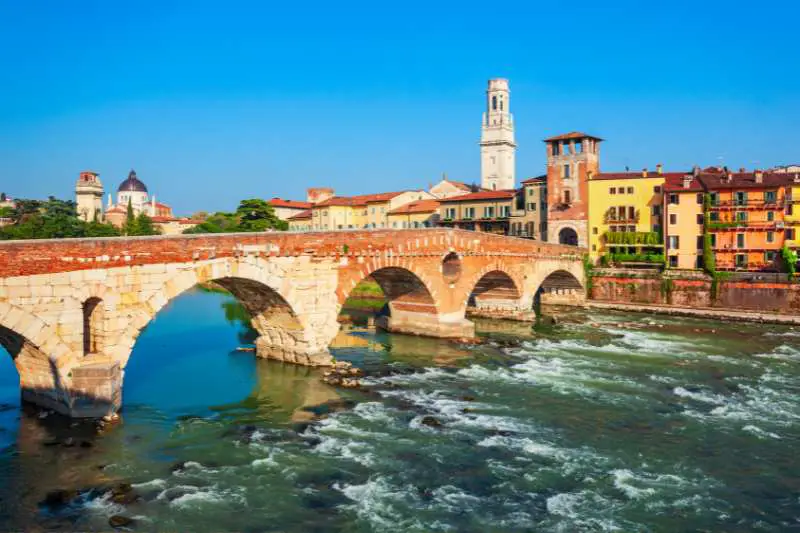
Ponte Pietra is a symbol of continuity and resilience. As the oldest bridge in Verona, it showcases the historical layers of the city, from Roman times through the Middle Ages to the present day. The bridge has been destroyed and rebuilt several times, most recently during World War II, symbolizing the city’s phoenix-like ability to rise from adversity.
Walking across Ponte Pietra is a journey through time, offering panoramic views of the Adige River and the cityscape, especially enchanting at sunset. It connects visitors not only to Verona’s past but to the timeless beauty of its natural and urban landscapes, making it a profound experience on any journey through the city.
6. Enjoy the view from Castel San Pietro

Positioned on a hill overlooking Verona, Castel San Pietro offers the best vantage point for panoramic views of the city. The climb or funicular ride to the top is rewarded with breathtaking sights that span the historic city center, the winding Adige River, and the surrounding hills.
The castle grounds provide a serene atmosphere, ideal for capturing photographs or simply taking in the view. This spot is particularly magical at dusk when the city lights begin to twinkle. Visiting Castel San Pietro gives travelers a unique opportunity to appreciate Verona’s beauty from above.
7. Discover the Basilica of San Zeno Maggiore
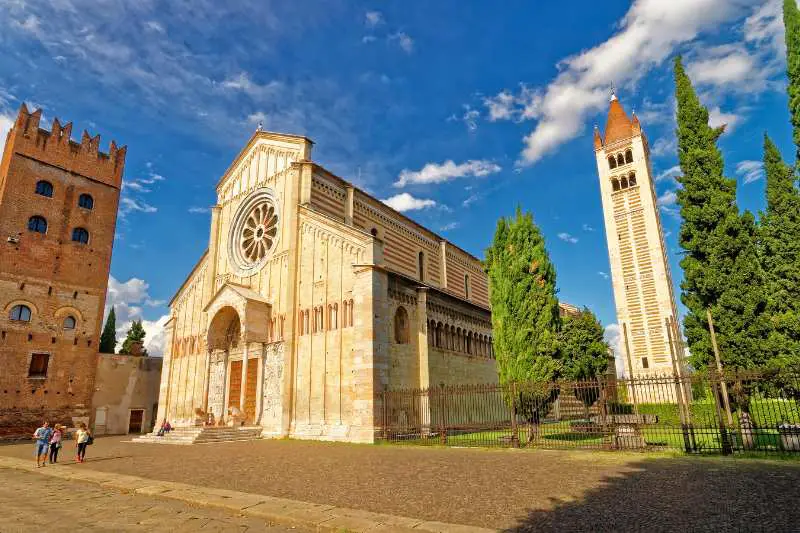
The Basilica of San Zeno Maggiore is hailed as a masterpiece of Romanesque architecture and is crucial to understanding the religious and artistic heritage of Verona. Its façade, adorned with a magnificent rose window known as the “Wheel of Fortune,” invites visitors into a space of profound spiritual and aesthetic significance.
The interior houses an array of art, including the famous altarpiece by Andrea Mantegna, one of the treasures of the Renaissance. The serene cloister offers a moment of peace away from the city’s hustle.
The basilica’s architectural beauty, combined with its artistic treasures, makes it a testament to the city’s rich cultural and spiritual history, deserving a prominent place on any Verona itinerary.
8. Tour the Lamberti Tower (Torre dei Lamberti)
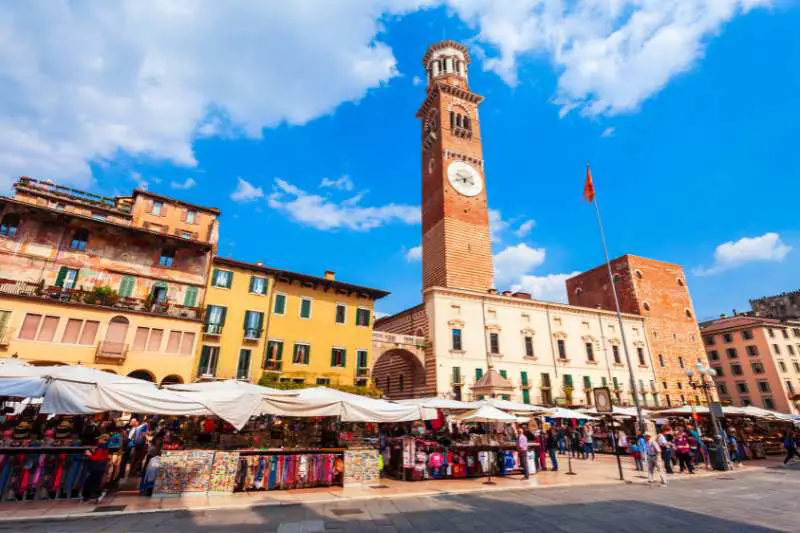
Torre dei Lamberti stands out in the Verona skyline as a medieval beacon inviting visitors to climb its heights for unparalleled city views. The tower’s history, stretching back to the 12th century, marks it as a symbol of Verona’s civic pride and resilience. Climbing the tower or riding the elevator reveals a panoramic view that encompasses the red rooftops of the city, the sprawling Piazza delle Erbe below, and the distant outline of the Verona Arena.
This experience offers not just a physical elevation, but a moment of connection with the city’s heartbeat, providing a unique perspective on its layout, history, and the beauty that has inspired poets and artists throughout the ages.
9. Experience local flavors at a Veronese Osteria
The culinary scene in Verona goes beyond traditional dishes; it’s an integral part of the city’s cultural identity. Visiting a local osteria lets travelers dive deep into this gastronomic richness, tasting dishes steeped in history and flavored with local ingredients.
Whether it’s savoring a plate of risotto all’amarone, accompanied by a glass of Valpolicella wine, or indulging in fresh tortellini, each bite tells a story of Veronese tradition and the land’s bounty.
This authentic culinary experience captures the essence of Verona.
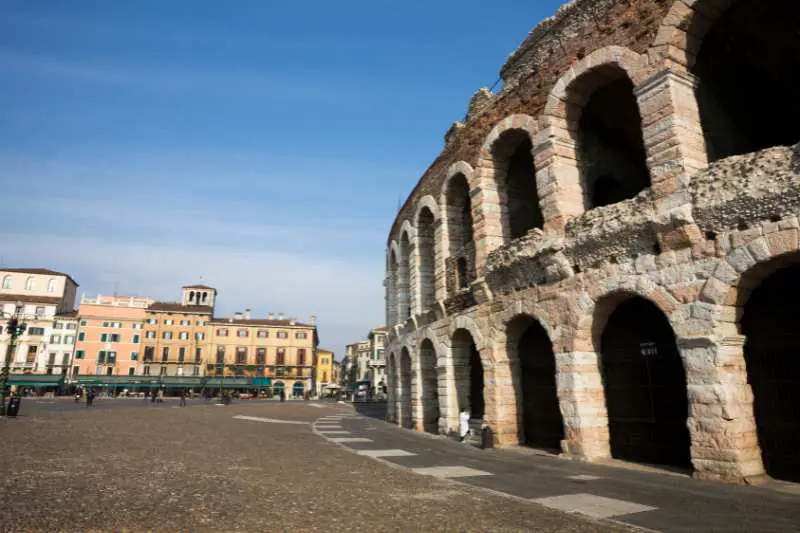
How To Get To Verona
Traveling to Verona, nestled in Italy’s Veneto region, promises an experience filled with history, culture, and the undeniable charm of its cobbled streets and ancient architecture. This guide will help you navigate your way to this enchanting city from other parts of Italy.
If you’re starting your journey from cities like Rome, Milan, or Venice, taking the train is the most efficient option. Italy’s train network is extensive and reliable, offering both high-speed (Frecciarossa or Italo) and regional train services. High-speed trains can whisk you to Verona in just over an hour from Milan, while from Rome, it takes about three hours. Remember to book your tickets in advance for the best deals.
For those who prefer hitting the road, renting a car offers the flexibility to explore at your own pace. The Italian highways (autostrade) are well-maintained and easy to navigate. Driving from Milan takes about two hours, and from Venice, you can reach Verona in just an hour and a half. Be mindful of tolls on the highways and parking zones within the city.
Another viable option is the bus. Services like FlixBus connect Verona with major Italian cities. While this might take a bit longer than the train, it’s often more economical and offers a different view of the Italian landscape along the way.
Lastly, for international or distant travelers, arriving by plane is an option. Verona’s Valerio Catullo Airport welcomes flights from European cities and provides shuttle services to the city center, making it a convenient gateway.
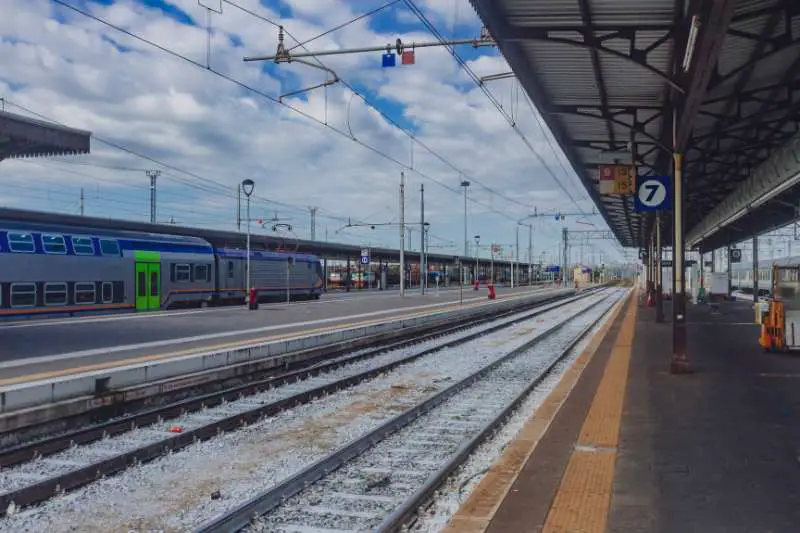
Final Words
Verona is a city that captivates the hearts of its visitors with a charm that transcends the legendary tale of Romeo and Juliet. Beyond its famed love story, the city unfolds as a canvas of rich history, vibrant culture, and gastronomic delights, beckoning travelers to explore its every corner.
Indeed, Verona offers an array of experiences that make it a must-visit destination, far beyond what’s been immortalized by Shakespeare. By wandering its ancient streets, indulging in local cuisine, and reveling in its artistic and natural beauty, one truly discovers the soul of Verona—a city that lovingly bridges the past with the present.
Find more guides to Northern Italy here or click here to discover some amazing hidden gems in Venice. Don’t miss the chance to explore the nearby Dolomites here or Bologna here.
